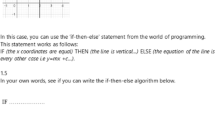Abstract
The recent development of powerful new technologies such as dynamic geometry software (DGS) with drag capability has made possible the continuous variation of geometric configurations and allows one to quickly and easily investigate whether particular conjectures are true or not. Because of the inductive nature of the DGS, the experimental-theoretical gap that exists in the acquisition and justification of geometrical knowledge becomes an important pedagogical concern. In this article we discuss the implications of the development of this new software for the teaching of proof and making proof meaningful to students. We describe how three prospective primary school teachers explored problems in geometry and how their constructions and conjectures led them “see” proofs in DGS.
Similar content being viewed by others
References
Chazan, D. (1993). High school geometry students’ justification for their views of empirical evidence and mathematical proof. Educational Studies in Mathematics, 24, 359–387.
De Villiers, M.D. (1993). The role and function of proof in mathematics. Epsilon, 26, 15–30.
De Villiers, M.D. (1996). Some adventures in Euclidean geometry. Durban: University of Durban-Westville.
De Villiers, M.D. (2003). Rethinking proof with Geometer’s Sketchpad 4. Emeryville: Key Curriculum Press.
Edwards, L. (1997). Exploring the territory before proof: Students’ generalizations in a computer microworld for transformation geometry. International Journal of Computers for Mathematical Learning, 2, 187–215.
Hanna, G. (1995). Challenges to the importance of proof. For the Learning of Mathematics, 15(3), 42–49.
Hanna, G. (1998). Proof as understanding in geometry. Focus on Learning Problems in Mathematics, 20(2 & 3), 4–13.
Hanna, G. (2000). Proof, explanation and exploration: An overview. Educational Studies in Mathematics, 44(1), 5–23.
Hersh, R. (1993). Proving is convincing and explaining. Educational Studies in Mathematics, 24(4), 389–399.
Hölzl, R. (2001). Using dynamic geometry software to add contrast to geometric situations – a case study. International Journal of Computers for Mathematical Learning, 6, 63–86.
Hoyles, C. & Healy, L. (1999). Linking informal argumentation with formal proof through computer-integrated teaching experiments. In O. Zaslavsky (Ed.), Proceedings of the 23rd Conference of the International Group for the Psychology of Mathematics Education (pp. 105–112). Haifa, Israel.
Jones, K. (2000). Providing a foundation for deductive reasoning: Students’ interpretations when using Dynamic Geometry Software and their evolving mathematical explanations. Educational Studies in Mathematics, 44, 55–85.
Knuth, E. (2002). Secondary school mathematics teachers’ conceptions of proof. Journal for Research in Mathematics Education, 33(5), 379–405.
Laborde, C. (2000). Dynamic geometry environments as a source of rich learning contexts for the complex activity of proving. Educational Studies in Mathematics, 44(1), 151–161.
Luthuli, D. (1996). Questions, reflection, and problem solving as sources of inquiry in Euclidean geometry. Pythagoras, 40, 17–27.
Mariotti, A.M. (2000). Introduction to proof: The mediation of a dynamic software environment. Educational Studies in Mathematics, 44(1), 25–53.
Mason, J. (1993). Questions about geometry. In D. Pimm & E. Love (Eds.), Teaching and learning mathematics: A reader. London: Holder & Stoughton.
NCTM Standards (2000). Principles and standards for school mathematics. Reston: VA.
Pandiscio, E.A. (2002). Exploring the link between preservice teachers’ conception of proof and the use of Dynamic Geometry Software. School Science and Mathematics, 102(5), 216–221.
Polya, G. (1957). How to solve it. New York: Doubleday.
Simpson, A. (1995). Developing a proving attitude. In Conference Proceedings: Justifying and Proving in School Mathematics (pp. 39–46). London: University of London, Institute of Education.
Author information
Authors and Affiliations
Corresponding author
Additional information
Constantinos Christou: Author for correspondence.
Rights and permissions
About this article
Cite this article
Christou, C., Mousoulides, N., Pittalis, M. et al. Proofs through Exploration in Dynamic Geometry Environments. Int J Sci Math Educ 2, 339–352 (2004). https://doi.org/10.1007/s10763-004-6785-1
Issue Date:
DOI: https://doi.org/10.1007/s10763-004-6785-1




